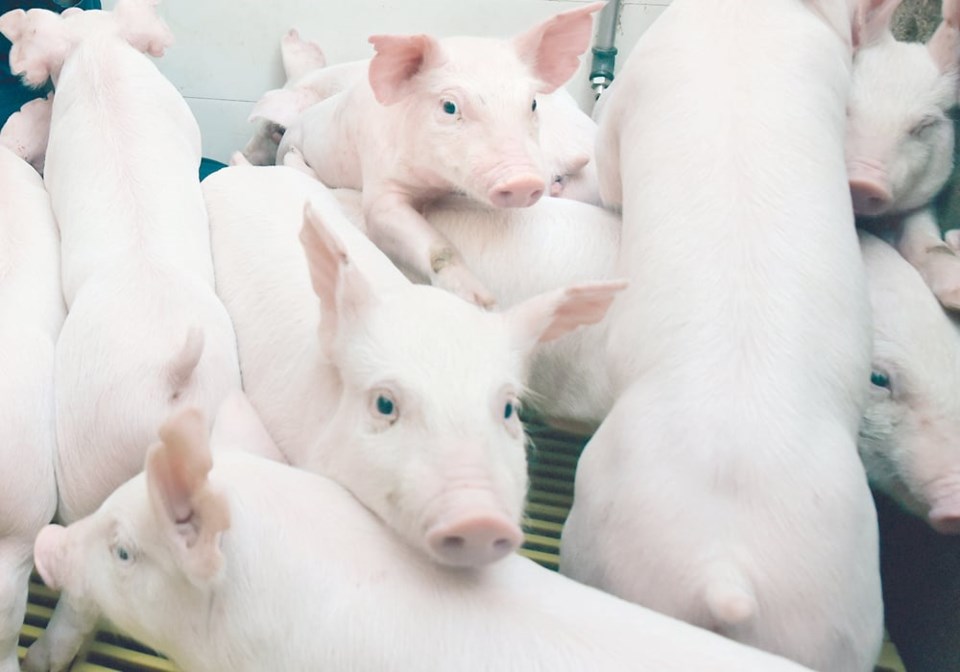WESTERN PRODUCER — Hog farmers are bracing for chaos and lower prices after the U.S. Supreme Court upheld a California law cutting off that giant market from most North American pork.
The law, known as Proposition 12, also affects other meats such as chicken and beef. It bans the in-state production and sale from any source of meats not produced to the law’s specifications, which defines not only the type of animal production systems allowed but also technical details required for compliant systems.
While the intention known as “Prop 12” is to force livestock producers to offer systems such as open housing for gestating sows that many people believe are more humane than individual stalls, the technical specifications mean that many barns that have been retrofitted or built new around open housing won’t be acceptable.
That raises worries that pork will become scarce in California while supplies destined for California pile up across North America as millions of tonnes need to find other buyers.
“There’s a lot of uncertainty and confusion,” Darcy Fitzgerald, executive director of Alberta Pork, said in an interview.
The U.S. Supreme Court’s approval allows the law to come into effect on July 1, but it is unclear what that means in terms of what pork will be allowed into California and what will be banned, Fitzgerald said. Will it apply to animals and pork born, raised, slaughtered, processed or marketed before that date, or only apply to animals and meat created after the law comes into effect?
Then there will be the market reaction as consumers in California decide if they’re willing to pay more for what is expected to be higher-priced pork.
Also worrying pig farmers, processors and marketers are expected “trigger” laws that can be rapidly approved now that Prop 12 has been upheld by the Supreme Court. Massachusetts already has a law approved and numerous other jurisdictions are expected to bring forward their own.
Some of the biggest packers in the U.S. have said they intend to supply Prop 12 compliant pork and other meats to California, but because the law goes beyond requiring open housing and other systems, it is unclear how much of today’s production will be blocked from California, which has a bigger population than Canada.
“It will invariably run into the law of unintended consequences,” said Stephen Heckbert, executive director of the Canadian Pork Council.
Low profits and regulatory challenges have hindered new barn construction in the last 15 years. Many facilities are aging and might not be replaced.
Small numbers of barns with open housing have been built, but few with the required amount of space per sow defined by Prop 12. For instance, even with open housing, the new law dictates that each sow must have at least 24 sq. feet of room, which is more than most contemporary systems provide.
Maple Leaf Foods in Canada is a major hog producer that has already transitioned all of its production to open housing systems, but how well they comply with Prop 12 regulations will determine how accessible those pigs will be to the California market.
The U.S.’s main hog industry organization, the National Pork Producers Council, spearheaded legal challenges to the law along with the American Farm Bureau Federation. The challenge said Prop 12 breaches constitutional provisions barring states from interfering with interstate trade. Most pork in California is brought in from other parts of North America.
Canadian and American hog producers supported the challenge.
The Supreme Court was split, upholding Prop 12 by a 5-4 margin.
Market watchers will be alert for signs of disruptions as Prop 12 and other laws and rules go into place. The impacts could be unpredictable.
Canadian hog production is intimately entwined in North American markets, with more connections north-south than east-west. Any effects on the U.S. Midwest will affect Manitoba, while impacts closer to California are likely to hit Alberta quickly. If shortages of pork develop in California, there could be a strong consumer reaction.
Early in 2023, New Zealand consumers erupted after egg shelves became empty when a combination of COVID shutdowns of free-range egg farms, national regulations requiring enhanced housing or free-run barns and grocery chain decisions to refuse to buy anything but free-run eggs caused egg supplies to fall far beneath consumption.
That has led to a pushback against the grocery stores and the regulations, which some people speculate could occur in California if pork disappears.
“This may be the same thing,” said Fitzgerald.




